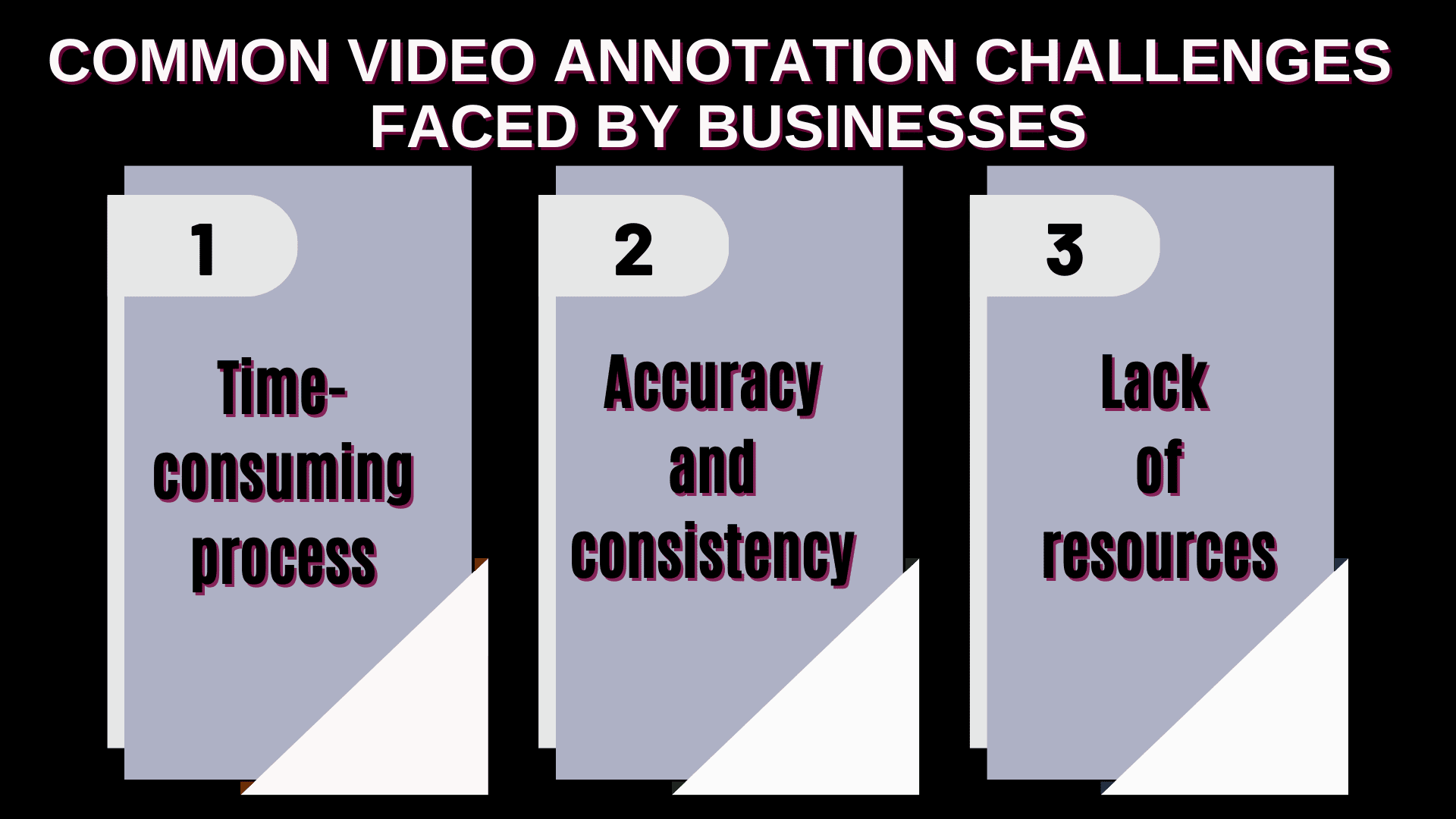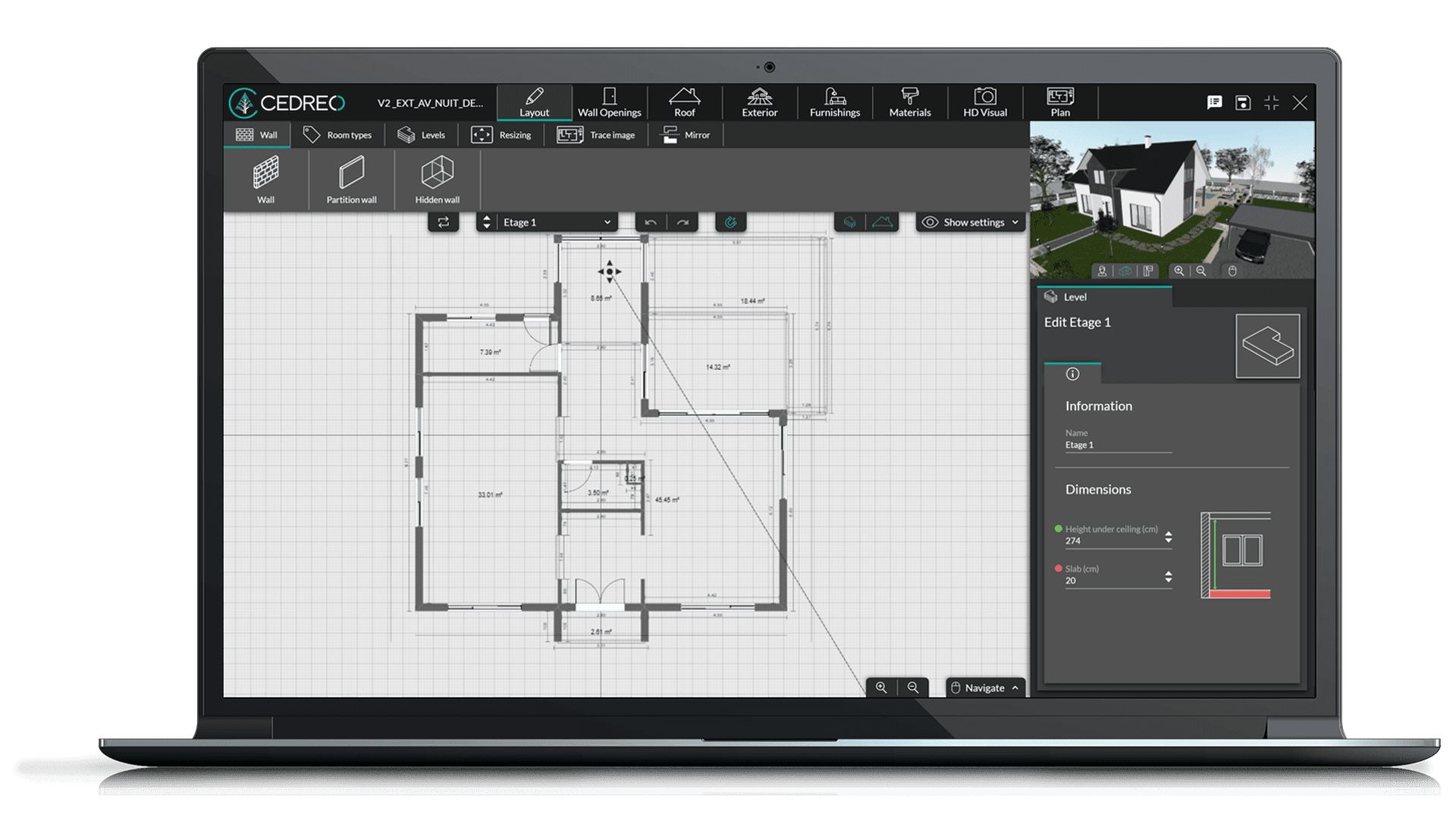Video annotation is the process of adding metadata or labels to a video file to provide additional insights about its contents. This can be done through various methods, including adding text, tagging specific objects or people, or even creating a transcript of the audio.
Video annotation is widely used to train machine learning models to recognize and classify different objects, actions, and events in a video.
This guide will cover the basics of video annotation, including the latest tools, techniques, and challenges. Moreover, you’ll learn about how a video annotation service can assist you with the process.
Techniques of Video Annotation
You can label a video using different annotating techniques, some of which are listed below:
- 2D bounding boxes: 2D bounding boxes are a common type of annotation that involves drawing a rectangle around an object in the video frame. This is often used to identify and classify objects within a video, such as vehicles, animals, or pedestrians. 2D bounding boxes are particularly used for tasks that involve identifying and tracking moving objects within a scene.
- 3D bounding boxes: 3D bounding boxes are similar to 2D boxes, but they take into account the depth and orientation of objects within a video. This allows them to more accurately represent the shape and position of objects within a scene. 3D bounding boxes are useful for tasks such as object recognition and pose estimation.
- Keypoint annotation: Keypoint annotation involves labeling specific points of interest on an object, such as corners or joints. This can be used to track the movement and orientation of objects or to identify specific features such as facial features or hand gestures. Keypoint annotation is useful for tasks such as pose estimation and action recognition and can be used in applications such as human-computer interaction or motion capture.
- Semantic segmentation: Semantic segmentation is a type of video annotation that involves assigning a label or class to each pixel within a video frame. This allows for a detailed understanding of the scene and the objects within it. Semantic segmentation can be used for tasks such as image and video classification, object detection, and scene segmentation.
- Lines and splines: Lines and splines are used to annotate specific features or points of interest in a frame. Lines are typically used to mark straight edges or boundaries, while splines are used to mark curved or irregular shapes. Lines and splines are often used in tasks such as image segmentation and object recognition, where the goal is to accurately identify and classify different objects or regions within an image.
Methods for Video Annotation
Single-frame annotation: Single-frame annotation involves adding annotations to individual frames of a video. The method is typically used for videos that are relatively short or for specific frames that require more detailed analysis. Single frame annotation can be a time-consuming process as the annotations are added manually by a human annotator. Nonetheless, businesses can automate the process using computer vision algorithms.
Multi-frame or streaming annotation: Multi-frame annotation involves adding annotations to multiple frames of a video, often in real-time, when the video is being played. The method is often used when the objects or events in the video are dynamic or change significantly from frame to frame.
Common Video Annotation Challenges Faced by Businesses

Video annotation is a crucial aspect of video analysis and organization. However, it can be a complex process involving the challenges listed below. Know that these challenges, if not handled effectively, can also affect the performance of your machine learning models/projects.
Time-consuming process: Videos are typically much larger and more complex than static images, plus they often contain a wide range of objects, actions, and emotions. Depending on the length of the video and the level of detail needed, it can take hours or even days to annotate a video. This can be challenging for organizations that have large video libraries and need to annotate multiple videos at once.
Accuracy and consistency: While annotating a file, it is important to ensure that the tags are accurate and relevant to the video. This requires a high level of attention to detail, as even small errors can have a significant impact on the accuracy of the final annotations. This can be a major challenge for businesses dealing with large datasets or annotating videos in real time.
Lack of resources: Depending on the scope and size of the project, video annotation can be resource-intensive. It may require a team of annotators or specialized software to efficiently and accurately annotate a video file.
How Can Outsourcing Help Combat the Challenges of Video Annotation?
Now that you’re familiar with the challenges of video annotation, one of the best ways to combat these challenges is to outsource video annotation services.
By outsourcing video annotation to a specialized third-party provider, organizations can benefit from the expertise and experience of the trained annotators. Plus, also get access to the latest tools and technologies for efficient and accurate video annotation.
Outsourcing also allows organizations to scale their video annotation efforts without having to invest in additional in-house resources or training. This can be especially useful for organizations with fluctuating needs for video annotation or requiring large volumes of data annotated quickly. In addition to the cost and time savings of outsourcing, organizations can also benefit from increased accuracy and quality of video annotation provided by experienced annotators. This can help ensure that ML models trained on annotated video data are of the highest quality and perform well in real-world applications.
Top Video Annotation Tools for 2023
Video annotation tools are software programs that allow users to add any additional yet relevant information to a video file. These tools are used by businesses to collaborate and efficiently analyze videos for improved results.
Here lists down some of the best video annotation tools for 2023:
FileStag: FileStag is a cloud-based video annotation tool that allows users to add notes and comments to specific parts of the video. It also includes a time-stamping feature so users can easily reference specific moments in a video. FileStag is particularly useful for teams working on video projects as it allows multiple users to collaborate and leave feedback on a single video.
Hive: Hive is a video annotation tool designed specifically for teams working on large video projects. It has a simple and user-friendly interface that makes it easy for users to navigate and use. Hive allows users to collaborate with their teams in real time, making it a great tool for remote teams. More so, it also has a built-in player that allows users to play and pause the video, making it easy to review and analyze the content.
ClickUp: ClickUp is another popular video annotation tool designed to help businesses and teams collaborate on projects and improve the efficiency of their workflows. With ClickUp, users can add comments, notes, and other information to their videos, as well as track their progress and assign tasks to team members. ClickUp also has a range of other features, including time tracking, project management, and team communication tools.
Takeaway
Video annotation is a powerful tool that can be used to improve the accuracy and accessibility of video content. It can also help train and evaluate machine learning models to unlock their full potential for parsing video content. However, know that video annotation can be a complex task, especially for businesses with little to no knowledge about the process. Herein, outsourcing video annotation services to a third-party provider can help streamline the process and save both time and resources.
Author Bio:
Jessica is a Content Strategist, currently engaged at Data-Entry-India.com- a globally renowned data entry and management company -for over five years. She spends most of her time reading and writing about transformative data solutions, helping businesses to tap into their data assets and make the most out of them. So far, she has written over 2000 articles on various data functions, including data entry, data processing, data management, data hygiene, and other related topics. Besides this, she also writes about eCommerce data solutions, helping businesses uncover rich insights and stay afloat amidst the transforming market landscapes.








